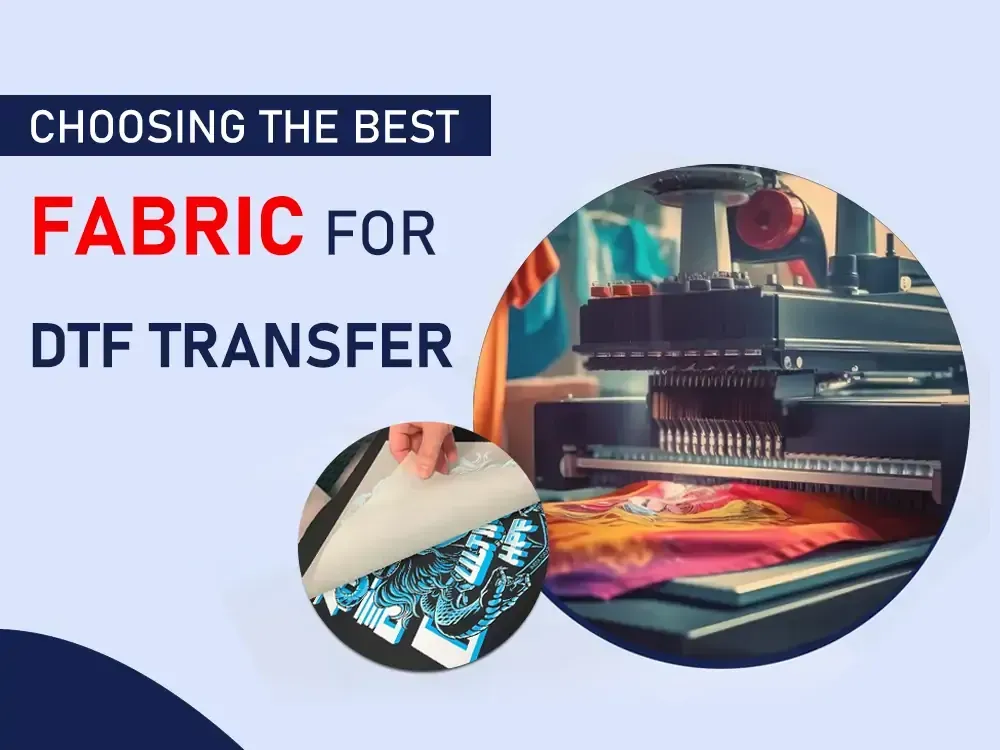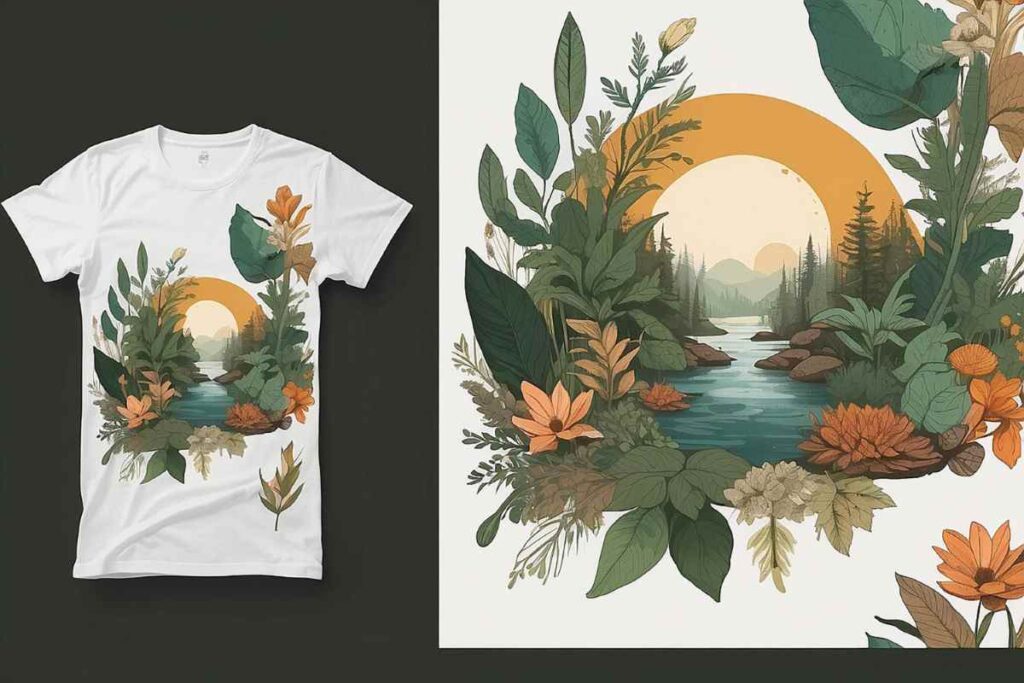In the ever-evolving world of printing technology, understanding the best materials for DTF transfers is crucial for achieving exceptional results. Direct-to-Film (DTF) transfers have emerged as a favorite among both commercial printers and DIY enthusiasts for their versatility and vibrant output. Whether you’re working with polyester fabric for its durability or exploring options like cotton transfers, knowing the right materials can significantly impact your project’s success. This guide will explore top choices, including the use of gang sheets to maximize efficiency and reduce costs. By leveraging the best DTF transfer materials, you can enhance your designs and ensure high-quality prints that stand the test of time.
When discussing ideal substrates for direct-to-film printing, alternative terms like DTF transfer media and suitable fabrics come into play. Utilizing advanced printing techniques, professionals can achieve stunning results with various textile options, ranging from breathable cotton to durable polyester blends. Understanding the characteristics of these materials, including their interaction with DTF inks and heat transfer processes, is essential for optimizing print quality. Additionally, incorporating concepts such as gang sheets can lead to more efficient production, especially for bulk orders. Exploring the dynamic spectrum of materials for DTF applications opens up new possibilities for custom apparel and design excellence.
Understanding the Basics of DTF Printing
Direct-to-Film (DTF) printing has revolutionized the custom apparel industry by providing a versatile and cost-effective method for transferring intricate designs onto various fabrics. Unlike traditional printing techniques, DTF involves printing onto a special film that is then heat pressed onto the garment, which not only allows for detailed images but also creates a soft feel that is comfortable to wear. This method can adhere to a wide range of textiles, making it ideal for businesses looking to produce high-quality custom apparel.
The flexibility of DTF printing stems from its compatibility with both natural and synthetic fabrics. Whether using 100% cotton or a blend of cotton and polyester, DTF technology delivers vibrant colors and ensures that designs withstand multiple washes. The patented process makes it possible to produce striking designs that are both vivid and durable, allowing for creative expression in ways that were previously challenging with other printing methods.
Best Materials for DTF Transfers: A Comprehensive Overview
When selecting the best materials for DTF transfers, fabric choice plays a critical role in the final print quality. Polyester blends, in particular, strike a balance between durability and comfort. Fabrics made from a mix of polyester and cotton yield prints that are not only vibrant but also maintain their softness. The polyester enhances color vibrancy and allows for a smoother transfer process, while the cotton contributes to breathability and comfort for the wearer.
Equally important, cotton fabric remains a staple in DTF printing thanks to its natural feel and comfort. While it may present some challenges in terms of ink absorption compared to polyester, advancements in binding agents and high-quality inks can bridge this gap effectively. Selecting cotton for DTF transfers, especially for everyday wear, allows printers to produce soft, breathable products without sacrificing quality and aesthetic appeal.
Maximizing Efficiency with Gang Sheets
Gang sheets are a game-changer in the realm of DTF printing, allowing multiple designs to be printed on a single film sheet. This not only optimizes material usage but also significantly reduces waste, offering a more cost-effective solution for businesses. By strategically arranging designs on gang sheets, printers can maximize the use of space, leading to increased productivity and efficiency during the printing process.
For businesses that cater to bulk orders, utilizing gang sheets can streamline production times and lessen the impact on material costs. For those looking to create multiple prints for events or marketing purposes, gang sheets provide flexibility and efficiency. As a result, investing in gang sheets can lead to reduced operational expenses while enhancing the overall profitability of DTF printing projects.
Choosing the Right Binding Agents for DTF Printing
When it comes to DTF printing, selecting the right binding agents is crucial for achieving high-quality results. High-quality adhesives ensure that the transfers adhere properly to the fabric, preventing issues such as peeling or fading. The type of adhesive chosen can significantly affect the longevity of the print, so opting for proven, reliable options is essential for maintaining quality.
Moreover, understanding environmental conditions is vital when selecting binding agents. Factors such as washing and drying cycles can impact the durability of prints made on various materials. By choosing binding agents that are designed to withstand these conditions, print shops can ensure customer satisfaction and minimize returns, allowing them to build a reputable brand around their expertise in DTF printing.
Innovations in DTF Printing Materials
The DTF printing landscape is ever-evolving, with manufacturers continually innovating to provide better materials for optimized performance. Recent advancements in large format printers serve to elevate production capabilities, allowing businesses to meet the demands of larger orders efficiently. Companies are investing in technologies that enhance quality and speed, making it easier for printer providers and their customers to enjoy the benefits of high-volume DTF printing.
Additionally, the emergence of compact A3 DTF printers provides accessible solutions for small businesses looking to produce quality prints without significant investment. This democratization of technology allows for greater participation in the market, empowering startups to offer custom designs and compete with larger entities. Staying informed about these innovations enables businesses to enhance their operations and product offerings, ensuring they remain competitive in the fast-paced world of DTF printing.
Comparing DTF Printing to Sublimation Printing
While DTF printing presents numerous benefits, it is essential to compare it with sublimation printing, which is often regarded as a well-established method. One of the key differences between the two lies in the resulting color vibrancy and fidelity on different fabrics. DTF prints, while offering high quality, may not always achieve the same level of brightness as sublimation on certain materials, particularly when it comes to lighter colors.
As such, designers must carefully consider their fabric choices and printing techniques. The right binding agents and high-quality inks can help enhance color outcomes in DTF printing, allowing for satisfactory results over a diverse range of fabrics. This consideration is critical for businesses and designers aiming for specific color outputs, ensuring their projects resonate well with customers and meet quality expectations.
Frequently Asked Questions
What are the best materials for DTF transfers?
The best materials for DTF transfers include polyester fabric, cotton blends, and pure cotton. Polyester offers vibrant color retention, while cotton provides softness. Blends balance durability and comfort, making them ideal for high-quality transfers.
How do polyester fabrics enhance DTF printing quality?
Polyester fabrics enhance DTF printing quality by providing excellent ink absorption and color vibrancy. Their ability to retain bright colors makes them perfect for detailed designs, resulting in professional-grade prints.
What are gang sheets and how do they benefit DTF printing?
Gang sheets are large sheets used to print multiple designs simultaneously in DTF printing. They optimize material usage by minimizing waste and reducing costs, making them advantageous for bulk printing and efficient production.
Can 100% cotton be used for DTF transfers, and what are its advantages?
Yes, 100% cotton can be used for DTF transfers. Its primary advantages include softness and breathability, making garments comfortable. However, using the right binding agents is crucial to enhance color brightness and print durability on cotton.
What is the role of binding agents in DTF transfer printing?
Binding agents play a critical role in DTF transfer printing by ensuring that the designs adhere well to fabrics. High-quality adhesives enhance the durability and longevity of prints, preventing issues like peeling or fading during washing.
How do the best materials for DTF transfers compare to sublimation printing?
While DTF transfers using polyester and cotton backgrounds offer flexibility and quality, sublimation printing typically provides brighter colors on suitable substrates. However, the choice of materials and binding agents in DTF can significantly improve color vibrancy and retention.
| Material | Benefits |
|---|---|
| Polyester and Cotton Blends | Durable with a soft feel; excellent ink absorption for vibrant prints. |
| Cotton Fabric | Soft, breathable, good for design longevity with proper binding agents. |
| Polyester Fabric | Great color retention and vibrancy, ideal for promotional prints. |
| Gang Sheets | Optimizes material use, minimizes waste, cost-effective for bulk printing. |
Summary
To successfully navigate the world of DTF printing, understanding the best materials for DTF transfers is essential. This not only enhances the quality of your prints but also contributes to the longevity of the designs you apply. From utilizing polyester and cotton blends for their balance of comfort and durability to leveraging high-quality gang sheets that maximize efficiency, each choice plays a pivotal role in achieving vibrant and lasting results. Keeping abreast of advancements in print technology and material offerings will empower you to make informed decisions that elevate your DTF projects, ensuring they remain competitive in a dynamic market.


